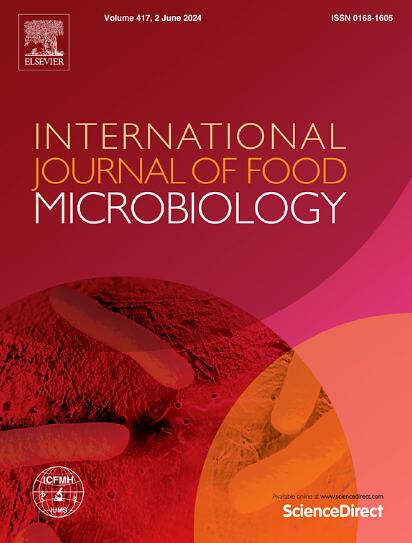Development and application of a risk assessment tool for preventing the introduction and transmission of Salmonella in poultry farms: Based on the Delphi–analytic hierarchy process
IF 5.2
1区 农林科学
Q1 FOOD SCIENCE & TECHNOLOGY
International journal of food microbiology
Pub Date : 2025-04-15
DOI:10.1016/j.ijfoodmicro.2025.111202
引用次数: 0
Abstract
A semiquantitative risk assessment method based on the Delphi–analytic hierarchy process (AHP) can serve as a proactive tool for the prevention and control of Salmonella infections in poultry farms. This method can facilitate early warning to minimize the risk of transmission of Salmonella to chicken meat and eggs. In this study, an expert panel comprising 22 members was established. After two rounds of evaluation, a risk assessment system consisting of 10 primary indicators and 73 secondary indicators was finalized. The expert participation rate (100 %), authority coefficient (1.0), and Kendall's W value (0.222 for the first round and 0.316 for the second round) met the required standards. Moreover, the system exhibited high reliability and validity. Based on the AHP, the top three weighted primary indicators were “seedstock management” (0.2769), “feeding and management” (0.1429), and “cleaning, disinfection and harmless disposal” (0.1429). The combined weight of the secondary indicators ranged from 0.00009 to 0.03027. In total, 6423 samples, including dead embryos and environmental samples, were collected from a poultry farm. By isolating Salmonella, assessing antimicrobial resistance, and performing whole-genome sequencing, the key risk points for contamination were identified. The implementation of targeted control measures based on the risk assessment model resulted in significant improvements. In particular, the overall antibody positivity rate decreased from 65.9 % to 8 %, the isolation rate of Salmonella from dead embryos decreased from 47.5 % to 3.75 %, and the isolation rate of Salmonella from the production environment of the hatchery workshop decreased from 10.1 % to 0.9 %. Moreover, notable improvements were observed in production metrics. Overall, our established risk assessment model is suitable for environments with low Salmonella isolation rates and can effectively facilitate the prevention and control of Salmonella in poultry farms.
基于德尔菲层次分析法的家禽养殖场沙门氏菌传入和传播风险评估工具的开发与应用
基于德尔菲层次分析法(Delphi-analytic hierarchy process, AHP)的半定量风险评估方法可作为预防和控制家禽养殖场沙门氏菌感染的前瞻性工具。这种方法可以促进早期预警,以尽量减少沙门氏菌传播到鸡肉和鸡蛋的风险。在这项研究中,成立了一个由22名成员组成的专家小组。经过两轮评估,最终确定了由10个一级指标和73个二级指标组成的风险评估体系。专家参与率(100%)、权威系数(1.0)、Kendall的W值(第一轮为0.222,第二轮为0.316)均满足要求标准。系统具有较高的信度和效度。AHP加权后的前3位主要指标分别是“种材管理”(0.2769)、“饲养与管理”(0.1429)和“清洁消毒与无害化处理”(0.1429)。二级指标的综合权重范围为0.00009 ~ 0.03027。从一个家禽养殖场总共收集了6423个样本,包括死亡胚胎和环境样本。通过分离沙门氏菌,评估抗菌素耐药性,并进行全基因组测序,确定了污染的关键风险点。基于风险评估模型的针对性控制措施的实施取得了显著的改善。其中,总抗体阳性率从65.9%下降到8%,死胚中沙门氏菌的分离率从47.5%下降到3.75%,孵化场车间生产环境中沙门氏菌的分离率从10.1%下降到0.9%。此外,在生产指标中观察到显著的改进。总的来说,我们建立的风险评估模型适用于沙门氏菌分离率较低的环境,可以有效地促进家禽养殖场沙门氏菌的预防和控制。
本文章由计算机程序翻译,如有差异,请以英文原文为准。
求助全文
约1分钟内获得全文
求助全文
来源期刊
CiteScore
10.40
自引率
5.60%
发文量
322
审稿时长
65 days
期刊介绍:
The International Journal of Food Microbiology publishes papers dealing with all aspects of food microbiology. Articles must present information that is novel, has high impact and interest, and is of high scientific quality. They should provide scientific or technological advancement in the specific field of interest of the journal and enhance its strong international reputation. Preliminary or confirmatory results as well as contributions not strictly related to food microbiology will not be considered for publication.

 求助内容:
求助内容: 应助结果提醒方式:
应助结果提醒方式:


